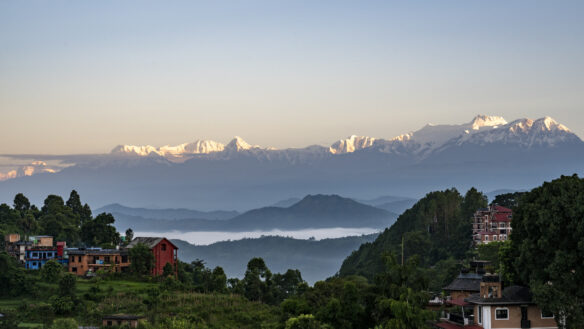Excerpt:
Off Monterey, the Edges of Earth expedition team falls in love with the vibrant, dense kelp forests of the region.
We felt the cold water slowly creep into our thick wetsuits, alerting us from the moment we got in that this was going to be the definition of a temperate dive. And despite our efforts to mentally trick ourselves into ‘warmth’, we couldn’t help but feel overwhelmed by the raw Pacific. But after another whole 45 minutes submerged in Monterey’s brisk winter waters, and our mind’s veering in the direction of hot showers, none of us were quite ready to surface yet.
We were immersed in that vibrant, dense kelp forest – one of the most spectacular sights we’ve yet to come across in our dive journeys – that made enduring this brutal chill worthwhile. After spending months diving California’s kelp back in 2021, we had our heart set on revisiting this destination for our two-year global expedition exploring the most interesting edges of earth. And despite our seemingly long first visit, we had a feeling we’d somehow only scratched the surface of these compelling Californian seascapes.
Now for those of you unfamiliar, you might be wondering what’s so intriguing about kelp. Of all the wonders of the sea, can kelp really be that compelling? To some, these underwater forests are just as (if not more so) fascinating and visually impressive as their terrestrial counterparts. Kelp, with around 30 different genera, are a type of large brown seaweed, and seaweed is considered a kind of algae. As algae, they’re distinctly different from plants despite their shared trait of converting sunlight into energy through photosynthesis.
These seaweed species both grow directly up to the ocean’s surface, creating a ‘forest-like’ canopy, and form a deeper ‘sub-canopy’ layer beneath it, much like tropical rain forests. The sub-canopy species contribute significantly to the structure of the kelp forest, providing a dynamic and diverse habitat. The structure of kelp not only consists of blades that form a canopy but also includes a holdfast – a root-like structure that anchors the kelp to the rock reef – but that’s where the similarities with a plant’s root system end. The holdfast is densely packed with small invertebrates such as brittle stars, amphipods, copepods, and tunicates. These organisms make their home in the interstitial spaces of the holdfast, even though the kelp itself may only be present for a few years. The three-dimensional structure of kelp, paired with its massive size, all makes for a diverse diving experience – one that our team has fallen in love with over the years…









